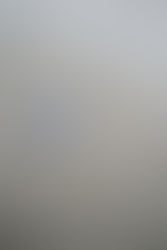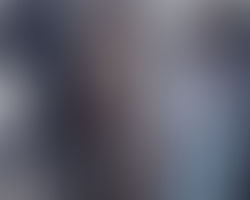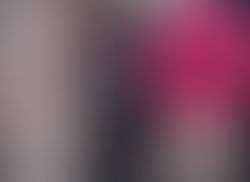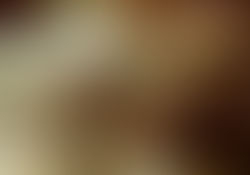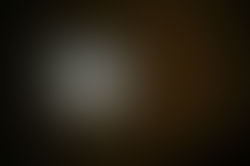BOUQUET, FOR H. CH. ANDERSEN, framed photograph, 62 x 42 cm, pigment print on photopaper, wooden frame, museum glass
It is thought that Hans Christian Andersen’s melancholic tale The Butterfly was inspired by the blooming flowers he observed along the promenade from Montreux to Chillon during his stay at a pension to treat his tuberculosis. In this partly autobiographical fairy tale, a butterfly flutters from one blossom to another in search of the perfect bride. The butterfly’s journey begins in spring with the first emerging snowdrops, and ends with mint, who hints of winter’s impending frost and their inescapable death. Despite this, the butterfly remains alone as he finds fault with all and fails to remain with a single flower.
The artist follows the butterfly’s ill-fated trajectory and selects the flower-brides mentioned in the text. Some of them die quickly whereas others wither away slowly, scattered in space and time petal by petal. The flora mentioned in the tale can never meet as some flowers perish while others are still sprouting. This challenge cannot be overcome even by the contemporary floral industry, so the artist uses photography to collect all of the flowers into an impossible bouquet.
Each photograph depicts a flower with a particular story. One was grown with the help of a biologist who created a synthetic environment that simulated the seasons to awaken the flower unnaturally; others were frozen to prolong their lives; some were absent and their images were bought from stock photography databases; a few were grown by the artist herself; and the remainder were purchased from a flower shop. As the artist was working with the butterfly’s bride-flowers, she realised that all of them were either white or that their most popular colour was white. The bouquet is thus intended for a bride.
The photograph resembles an old still life, where one is able to move around timelessly as though walking through a flower-laden path across all seasons. The journey begins in early spring and concludes in winter. The arrangement of flowers is a purely aesthetic act – it is creativity from its inception to its end – a parallel that suggest that this bouquet is appropriate for both the occasion of a wedding and a funeral.
GOOD HOPE, work in progress
This is a work that talks about different ways of experiencing and participating in the spaces of a city, about the encounters between consciousness and the city, about spatial configurations that resist being entered into or forbid being exited from, and about the algorithm dictated by these urban spaces. It investigates how the former order is being overdrawn by a multitude of constantly shifting cartographies. The work functions as a moving holographic multiplicity of layers which connects all of the lines from the different epochs of the city – the choreographies of changing times meet on the urban map. An architect’s utopian dream to (re)construct a city into a perfect circle in 1930’s is drawn over by hectic looping tracks of a vehicle. Those are all the possible exits from the Geroji Viltis (lit. Good Hope) roundabout in Vilnius that lead to the outskirts of town. These lines are scribed – as though lost in time – by endlessly driving around the dusk city in a 90’s limo, collecting artefacts and stories from and around the roundabout’s dystopian turns. The latter intersect with the artist’s personal experience of commuting through the transit space daily. Here it is linked to the contemporary teens’ first experiences of going out to the city, which are expanded by the internet, smart technologies and virtuality. People in the city have become knots in an enormous net, since today they themselves are creating new forms of how the space is experienced.
UNTITLED (extract), projection, text on an black & white film, loop
This is a follow-up of the artist’s work “Once upon a Time". In this work she appropriated one part of a sentence from the list of impoverished debtors living in Juodkrante
(a small distant town on the Curonian Spit, isolated by water), which was published in 1614 and discovered by the artist at the Liudvikas Reza Culture Centre’s historical exposition in Juodkrante. The list contains the names of Juodkrante’s residents and the way their lives had ended. Laura has chosen the extract common to a number of the names on the list, which states the circumstances of the deaths of the residents at the time. Generally, it states: “… and died in [the year of Death] in poverty”, as if it is a statistical average of everything on the long list.One of the inspirations to do this work has been her recollection of traveling to Kaliningrad for the first time and seeing Kant’s grave, which has been stuck in her memory ever since. She’s written the appropriated extract in the font of Kant’s memorial plaque.The word “extract” has several meanings in Lithuanian – it can signify a part of a longer text or a large hole in ice through which a net is taken out of the water. It is a motionless and silent movie – 24 frames change each other in a second, yet the content stays the same.
ONCE UPON A TIME, sound project, 15 hummed songs played outside, loop
At the core of this work is the concept of a story itself. The artist is interested in how any narrative or fairy tale starts. The very first words in every story are: Once upon a time... The essence of a human being’s existence and fragility is hidden in these words. Moreover, songs accompany a person all his/her life since the mother‘s lullabies to the funeral laments. The artist is interested in nonverbal language, intonation or humming in various aspects. For humans, as for many social animals, silence can be a sign of danger, and that’s why gentle humming and musical sounds tend to relax them. The work consists of an audio record with 15 songs hummed by one performer and played outside in low volume. The visitors can listen to the sound of someone's tranquil humming mixed with the natural sounds of nature. The songs have been collected during conversations with various invited persons who narrated stories from their lives – the personal and professional lives of these people are closely related to being at the sea. At the end of the conversations the artist asked each and every story teller if he/she had his/her own beloved song, song of the lifetime, and if he/she could possibly sing it, hum it? Surprisingly, the story tellers’ most beloved songs usually had a strong connection to the story that they were telling.
THE BOTTOM (part I), 2 channel video installation, 2 x 4:3 digitalized 8 mm b/w film, 21 min, sound, loop
The artist is interested in places and situations which are between leisure and danger, between pleasure and tragedy, between the imaginary and real worlds. She looks into the sediments of historical heritage, which are met at the bottom of the Sea, such as a local out of date acoustic fishing method or a trophy chemical weapon whose pieces were scattered at the Baltic Sea after the Second World War. The artist talks about fishermen and smelts which keep diminishing in number and which smell like cucumbers; about yperite, found in fishing nets, which looks very much like amber and smells like mustard. Almost every year when the Curonian Lagoon freezes the artist gets on the ice with
an 8 mm camera and a 9 m long hydrophone, used in the past to detect submarines. The 8 mm black and white film erases the links to today’s time and place, and turns “here” into “somewhere” while “now” into “once”.
IN LETTERS, photographs, drawing, collection of postcards, video, text
Swedish theoretician Karin Johannison in her book ‘Melancholy Rooms’ writes about how throughout the whole history of modern times we encounter the big tiredness. There are stunning similarities between the nervousness in the beginning of the 20th century and the stress in the beginning of the 21st century. According to the author, tiredness is a mute form of melancholy that relays to spiritual strain. Fatigue that is impossible to rest out. The artist is interested in the country as a metaphor of some other specific place. In the focus of Laura’s artistic research are the detailed descriptions of the visits to the Swiss sanatoriums, boarding houses and hotels which are frequently found in the early 20th century literature, biographies, diaries and letters of artists and intellectuals. Vladimir Nabokov’s novel “The Real Life of Sebastian Knight” became a pretext for the artist to visit Switzerland and to look for wellness institutions popular among the 20th century intellectuals. Switzerland is one of the countries appearing in the category “Topographical: Rest of the World” which became the axis for Laura’s art project.
SUSPENDED, 2 channel video installation, loop
A basketball is stuck at the top of T. K. Valaitis’s modernist sculpture – a huge weathercock built in Vilnius in 1973 which is located at the centre of a now defunct fountain. The wind moves this kinetic sculpture together with the basketball, which is stuck in space and time and therefore seems stripped of its core essence, of its possibility to bounce to the ground or fall through a basket. The ordinary trajectory of the ball has been radically transformed, the movement seems to have frozen into an extended moment of levitation. The situation seems paradoxical – the weathercock is so high that it is difficult to comprehend how and who could have thrown the ball this high and with such accuracy.The direction and the suspension of the ball on the weathercock’s arrow is complemented by a single kernel from a corn cob, flying into the camera after it’s been squished by lab equipment at the Lithuanian University of Agriculture. Thrown out of the cob and captured with a high-speed camera it gets suspended and keeps rotating in the air for a 200th part of a second, as though the ejection has made it dizzy – it has lost its coordination and is failing to realise the right place of landing.The captured vertigo of the kernel and the puzzling rotation of the ball at that great altitude are two participants of a carefully constructed dialogue. Both of the elements balance between trauma and deadpan laughter.
THE LANDING, vdeo film, 7 min.
The video captures a cruise ship that has delivered foreign tourists to the port of Klaipeda for a brief fête of entertainment, adventure and discovery. It features scenes of waiting for the hailing of the ship, its slow sail, the tourists’ landing, the rites of hospitality performed by the locals and, finally, the ship’s departure. The travellers are greeted by a group of local inhabitants who act like true “natives”. The rites include ethnic music and ballroom dancing collectives, flower-wreath-wearing maidens who serve mineral water and animal impersonators. The visitors watch the show from the balconies of their cabins. Skyscraper sized ships come to a dwarf-sized town, where they are welcomed by the “booked” locals, who are ready to demonstrate the best they have and can, while fluctuating between the states of directed friendliness, enthusiasm, weariness and boredom, between ambivalent authenticity and elementary calculus. The ships sail off while the city waves – it waves and counts what the ships have left for it on the shore.
LOOKING FOR BRUMMEL THE TEDDY BEAR, 2 slide projections, soundtrack, loop
The research objects of this project are the education system, the learning of foreign languages, and ideology. The artist studies / explores the German language textbook that she was using while being in the 1st grade of school. She is interested in the ways in which a child’s worldview gets shaped through foreign language learning. The textbook’s didactic texts appear as an odd combination of two elements: German culture and Soviet ideology. In essence, it is written in a coded language supposed to program the child’s mentality. The textbook’s “protagonist” is Brummel the Teddy Bear from East Berlin. He is a secret agent, a messenger, an intermediary between Berlin and Lithuania. The artist decided to turn her trip to Berlin into a project, the objective of which was to travel to the city for the first time and look for this bear that she “hadn’t seen for 20 years”…
GALA, video film, 12 min.
For a year the artist had been filming various corporate parties. She was interested in the very preparations for the celebrations. She filmed the work of the service staff, from setting of the tables and sound-checks to the event’s openings, the so-called welcome drinks. In the film, these moments of preparation are intercut with images of illegal garden-plots in the outskirts of Klaipeda city. At one point there had been a plan to build an amusement park on this land, yet later such development was halted, and the land was squatted by illegal gardeners almost exclusively of the Russian Orthodox background. The summer of 2005 was the last one for these gardens, just as for the crop harvest of that autumn. The first sign of the “last days” came in the form of a new shopping mall, bearing a symbolic name, “BIG”, erected near the area. These two lines are combined into a single narrative about preparation. In the first case, it is a preparation for celebration, in the other – a preparation for eviction.
NADEZHDA (HOPE), installation, video, 44 min., 3D slide objects ( 24 slides)
A woman from St. Petersburg named Nadezhda came to live in Lithuania in 1995. She works as a guard and is learning two foreign languages – English and Lithuanian – on her own. The artist has recorded one of her lessons on video. She has also used a part of her private archive in this work – a souvenir set of anonymous 3D stereo slides portraying a trip to the Black Sea, originally produced in a quantity of 9000 copies (a present from her grandmother). It appears that an eternal sunny day is captured in these images. The photographed landscapes and people resemble still-life compositions; each shot suspiciously appears like it’s been staged. Their three-dimensionality produces an impression of a paradise lost, peeped at through a keyhole.The video and the slides are connected by here and now as well as there and then situations, and history-changing events that took place soon after the slides had been produced. By travelling through the elements of the installation, one appears in the situations of historical breakthroughs, when the falling oppressive systems, iron curtains, nuclear plants or bombs shook the world and the lives of the seemingly small role characters, by carrying them away into culturally, linguistically and geographically foreign environments, simultaneously erasing the “sunny yesterday”.
NADEZHDA (HOPE). FIVE YEARS LATER, installation, 1 slide projection, diascope, text on a wall
This is the artist’s second work which focuses on the same Russian woman Nadezhda who has been living in Lithuania for quite a long time already. Laura met her by accident five years after the first work. Nadezhda had switched from working as a guard to working at a newsstand. The work captures the reunion in a changed environment. It features historical documentary material from the formerly shared workplace, a building that has been literally levelled to the ground. The text written by the artist laconically captures micro and macro movements in one of the streets in Vilnius. In this project, she was concerned with juxtapositions and fluctuations of personal and communal stories, as well as the occurrence of symbolic coincidences.
RUG, disassembled patched rug
The artist moves her gaze to the everyday, in fact, she looks down to the ground where lies a cheap, simple patched rug, mass produced in Pakistan though ordered and branded by IKEA. The artist disassembles the rug and then meticulously sorts, washes and irons the pieces. By the end of the process, each piece is hung on the wall – in this way the rug becomes a large many-coloured “wall painting”. With this deconstructive, week-long counter-functional production act the artist personalises the anonymous manual labour, handicraft of the women of the third world – the work which gets lost within the high paced flow of mass production. This way the artists touches – in the literal sense of the word – the foreign and unknown culture of the rug makers.
COUNTING OF PLAITS, video performance, 25 min.
Ethnic stereotypes, language and miscommunication, the role of female artists in the field of the contemporary art, cultural boredom and bureaucracy – the work “Counting of Plaits” puts the focus on these topics. In the video the artist herself is counting hundreds of plaits on the head of her colleague and friend, who she met during a cultural exchange program at the KulturKontakt residency in Vienna. As the artist counts in German, a language foreign to the Senegalese friend, the latter falls asleep. At the end of the performance the artist, the participant and the viewers figure out the exact number of plaits on the Senegalese woman’s head. The chosen visual style refers to the classical painting tradition, depicting women in their home environment. The verbal rhythm and physical gestures of the performance create a situation of an intimate ritual, which involves two female artists from different contexts and circumstances. The artwork helps to reduce the distance between persons, and actualises the most intimate dialogue through the act of touching.
FROM THE LIFE OF YOUNG LADIES, digitalized slide projection, sound, 14 min., loop
The work consists of 80 selected letters written by adolescent girls to the editors of “Panele" (Young Lady / Miss) magazine, in which the girls are seeking advice from gynaecologist Vaiva. Other girls of the same age copied these questions in calligraphic handwriting on school exercise book pages. These texts were then photographed for a slide projection. As one reads the inquiries and questions raised by young teens, it becomes clear how the education system collides with the real lives of growing individuals. It highlights huge gaps in understanding of one’s biological development and sex education; how families fail to address and inform on such issues and therefore become somewhat distant; how a staged morality clashes with a newly discovered world of the growing youth, to whom orientation or “help” is provided perhaps only through the popular media.
The girls are exploring themselves as though in a sex laboratory:
“Vaiva, I suffer from a boyfriend mania. I want them, desire them, and have erotic dreams at night. What should I do? It tires me and gets on my nerves.” Loreta, 14 years old
“How to make breasts grow faster? How to know whether they have fully formed? Does cappuccino damage breasts a lot?” Diana, 14 years old
“How to make a decision whether to give birth or not?” Rasa, 15 years old
INTENTION TO REMEMBER, video performance, 17 min.
“Intention to Remember” is one of the artist’s performative video artworks in which the artist tries to retrieve her memories of previously heard Lithuanian songs which she then sings here and now, while sitting in the kitchen, without any preparatory rehearsals or scripts, yet with all the missed words, stanzas, and abundant pauses – all of her attempts to remember. The duration of these silent episodes depends on the artist’s memory, while the duration of the whole video coincides with the duration of the VHS tape. The artist recollects and sings all the songs she has (not) sung in her life – from the ones she was taught at school to the repertoire of her family celebrations.






















































